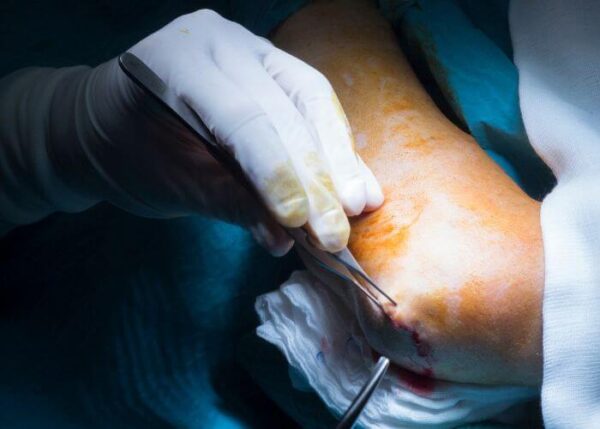Elbow Decompression Surgeon

Do you have a job or sports activity that involves forceful forward throwing, such as pitching, throwing or doing manual labor? If so, you may be at risk of developing bone spurs and/or bursitis in the elbow. These conditions can make it difficult to bend the elbow and throwing or doing manual labor may be painful. To treat this condition, an elbow doctor may suggest an elbow posterior decompression. Arthroscopic elbow surgeon, Doctor Riley J. Williams provides diagnosis as well as surgical and nonsurgical treatment options for patients in Manhattan, Brooklyn, New York City and surrounding areas who have sustained an injury to the elbow. Contact Dr. Williams’ team today!
What is elbow arthroscopy for posterior decompression?
Arthroscopic surgery can be used to repair posterior elbow impingement. Elbow arthroscopy with posterior decompression facilitates the removal of soft tissue and bony impediments to motions, with a special focus on full elbow extension. Elbow arthroscopy is performed under regional anesthesia with specialized, small surgical tools and an arthroscope (camera). The camera is inserted into joint through a small incision, the arthroscope projects images of the inside of the elbow onto a monitor. The large visuals help Dr. Williams pinpoint the exact area of abnormality. Dr. Riley J. Williams, orthopedic elbow surgeon, serving Manhattan, Brooklyn, New York City, NY and surrounding areas, has extensive experience performing arthroscopic surgery for posterior decompression within the elbow.

What is posterior elbow impingement?
Posterior elbow impingement occurs when there is a thickening of the bone or soft tissues in the back of the elbow joint. The forearm bone (ulna) articulates or joint with the upper arm (humerus) at the elbow. Repetitive forced elbow extension (pitching, throwing, manual labor) can cause the formation of osteophytes (bone spurs) and bursitis in the back of the elbow. These tissue changes can limit full elbow extension rendering the affected patient unable to straighten his or her arm. This can be very limiting and functional compromising. Unfortunately, nonoperative methods are not effective at correcting this cause of elbow motion loss. Patients who wish to achieve improved elbow extension or seek pain relief are typically indicated for surgery.
How is elbow arthroscopy for posterior decompression performed?
The procedure is done under regional anesthesia in an outpatient setting. Dr. Williams begins the surgery by making very small incisions in the elbow to access the joint. Surgical tools are inserted into the incision sites. A device called an arthroscope (camera) projects images on a monitor, which enables Dr. Williams to perform the posterior decompression. Elbow arthroscopy is usually performed within 30-45 minutes. All abnormal tissue is removed from the back of the elbow. Dr. Williams confirms the ability to better extend the elbow during the procedure.
What are the risks of elbow arthroscopy?
Arthroscopic surgery has a high success rate, as it is a minimally invasive procedure. There is a possibility of some complications which include, but are not limited to: drainage, nerve injury, joint infection and bleeding. These complications are very rare.
How long does it take to recover from elbow arthroscopy for posterior decompression?
The patient usually goes home within a few hours after surgery. A sling is recommended for 5-7 days after surgery. Dr. Williams will remove the sutures within two weeks of the procedure. Light work and exercises can be resumed soon after surgery. An individual may return to work in one to two weeks, but it may take up to six months to fully heal; perhaps longer for more severe cases.
For additional resources on elbow arthroscopy for posterior decompression or to have your elbow pain evaluated, please contact the office of Dr. Riley J. Williams, MD, orthopedic elbow surgeon serving Manhattan, Brooklyn, New York City, NY and surrounding areas.